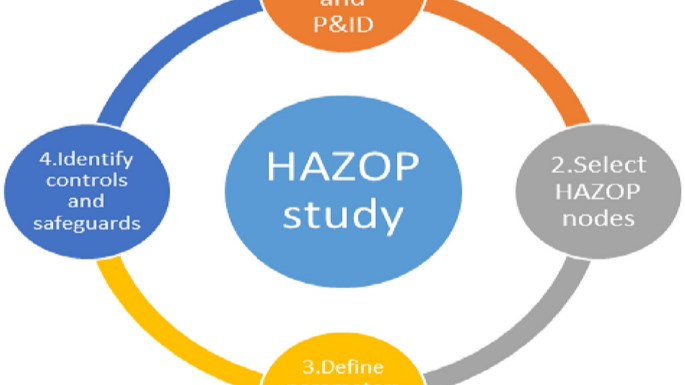Common Mistakes in HAZOP Studies and How to Avoid Them

Hazard and Operability (HAZOP) Study is a structured and systematic examination of industrial processes to identify potential hazards and operability issues. It plays a crucial role in risk management and process safety. However, conducting a Hazop Study effectively requires attention to detail and adherence to best practices. Many industries make common mistakes that compromise the efficiency of the study, leading to gaps in hazard identification.
This article discusses some of the most frequent mistakes in HAZOP studies and provides actionable solutions to ensure a thorough and effective analysis.
Lack of Clear Objectives and Scope
One of the most critical mistakes in HAZOP studies is failing to define clear objectives and scope before initiating the process. Without a well-defined scope, the study may overlook crucial aspects of the process, leading to incomplete hazard identification.
How to Avoid It
- Clearly outline the boundaries of the study, including process units, equipment, and operational parameters.
- Establish specific objectives aligned with safety and operability goals.
- Engage all stakeholders in defining the scope to ensure a comprehensive approach.
Inadequate Team Selection
A successful HAZOP study relies on the expertise of a multidisciplinary team. Selecting an inexperienced or insufficiently diverse team can lead to gaps in risk identification.
How to Avoid It
- Ensure the team consists of process engineers, safety professionals, operations personnel, and maintenance experts.
- Include a Safety Consultant who has experience in HAZOP studies to provide valuable insights.
- Provide team members with proper training and awareness about HAZOP methodology before starting the study.
Poorly Defined Guide Words
Guide words such as “No,” “More,” “Less,” and “Reverse” help identify deviations from the intended process. If these guide words are not properly selected, the study may fail to cover all potential hazards.
How to Avoid It
- Use standard guide words relevant to the specific process under study.
- Ensure the team understands the meaning and application of each guide word.
- Regularly review and update guide words based on process changes.
Incomplete Documentation and Record-Keeping
A common issue in HAZOP studies is improper documentation, which can lead to confusion and loss of critical safety information. Poor record-keeping may result in the failure to implement recommended safety measures.
How to Avoid It
- Maintain comprehensive records of identified hazards, potential consequences, and recommended actions.
- Use standardized templates for documentation to ensure consistency.
- Store records securely and make them easily accessible for future reference.
Ignoring Human Factors and Operational Errors
Many HAZOP studies focus primarily on equipment and process deviations, overlooking human factors such as operator errors, fatigue, and procedural mistakes. This can lead to incomplete risk assessments.
How to Avoid It
- Consider human reliability analysis as part of the HAZOP study.
- Review past incident reports to identify patterns of human error.
- Implement training programs to minimize the likelihood of operator mistakes.
Lack of Integration with Other Safety Audits
A Safety Audit provides a comprehensive evaluation of workplace safety. If HAZOP studies are conducted in isolation without integrating findings from other safety assessments, critical hazards may be missed.
How to Avoid It
- Align HAZOP findings with other safety programs, such as Process Safety Management and workplace risk assessments.
- Conduct periodic reviews to ensure safety recommendations from multiple studies are implemented.
- Share HAZOP insights with other audit teams to promote a holistic approach to risk management.
Rushing Through the Study
Time constraints and production pressures often lead to rushed HAZOP studies, resulting in an incomplete analysis. When key deviations are not properly examined, significant hazards can be overlooked.
How to Avoid It
- Allocate sufficient time for a thorough HAZOP study.
- Avoid scheduling HAZOP sessions under tight deadlines.
- Encourage open discussions and in-depth evaluations rather than focusing on speed.
Failure to Review and Update HAZOP Findings
HAZOP studies are not one-time exercises. Many companies fail to review and update their findings regularly, especially after process modifications. This can lead to outdated risk assessments that no longer reflect current operations.
How to Avoid It
- Conduct periodic HAZOP reviews, particularly after process changes, new equipment installations, or operational modifications.
- Schedule revalidation studies every few years to ensure continuous safety improvements.
- Establish a process for incorporating new findings into existing risk assessments.
Ineffective Implementation of Recommendations
Even when a HAZOP study identifies risks and suggests recommendations, failure to implement these actions reduces the study’s effectiveness. Some organizations treat HAZOP findings as theoretical rather than actionable insights.
How to Avoid It
- Develop a structured action plan for implementing recommendations.
- Assign responsibility to specific personnel for executing risk mitigation measures.
- Monitor and track the progress of safety improvements over time.
Overlooking Fire and Explosion Hazards
HAZOP studies often focus on process deviations but may not adequately address Fire Audit considerations. Failure to identify fire and explosion hazards can lead to catastrophic accidents.
How to Avoid It
- Incorporate fire risk assessments into the HAZOP process.
- Evaluate potential ignition sources, combustible materials, and fire suppression systems.
- Ensure compliance with national fire safety regulations and standards.
Conclusion
Conducting an effective HAZOP study requires careful planning, a skilled team, and a commitment to thorough risk assessment. Avoiding common mistakes such as unclear objectives, poor team selection, incomplete documentation, and lack of integration with other audits can significantly improve the study’s outcomes.
By implementing best practices and integrating HAZOP findings with broader safety initiatives like Safety Audit and Process Safety Management, organizations can enhance workplace safety and operational efficiency.
A well-executed HAZOP study not only prevents accidents but also ensures regulatory compliance and long-term sustainability in industrial operations. Companies that prioritize safety through proactive hazard identification and risk mitigation can create a secure and efficient working environment for their employees and stakeholders.







